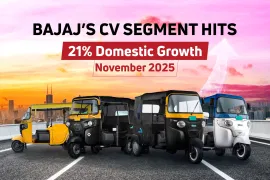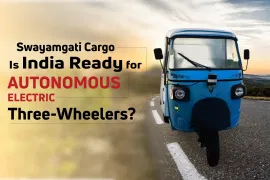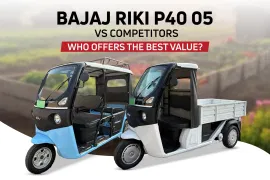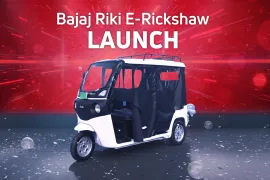Piaggio Vehicles Pvt Ltd, the Indian arm of Italian mobility giant Piaggio Group, is gearing up for the next phase of its product strategy. The company is investing in a new weight-optimised three-wheeler architecture designed to enhance efficiency and performance for both electric and internal combustion engine (ICE) models.
Moving Beyond Powertrain Upgrades
Chairman and Managing Director Diego Graffi explained that the company’s focus is shifting from purely powertrain and battery enhancements to the very structure of its vehicles.
“So far we have been mostly investing into powertrain, efficiency of a driveline, and battery pack…But now the next phase is also to invest into vehicle architecture,” Graffi said.
This weight-optimised Piaggio vehicle platform aims to boost range without increasing battery capacity, a move that avoids higher acquisition and replacement costs for customers.
Avoiding the Bigger Battery Trap
In a market with over 500 electric three-wheeler brands, Graffi criticised the trend of simply adding larger batteries to extend range. “When they want to provide a better range to the customer, they simply increase battery capacity. This is the easiest solution, but it also means higher cost of acquisition and significantly higher replacement costs after five years when the battery reaches end-of-life,” he noted.
Piaggio’s approach has been to improve driveline efficiency and reduce energy losses. Its electric models typically require 1.5 to 2 kWh less battery capacity than competitors for the same real-world range, which helps in long-term ownership savings.
Navigating Rare Earth Supply Challenges
Global rare earth shortages have disrupted EV motor manufacturing, but Piaggio has so far avoided production delays. Graffi credited proactive planning and supplier partnerships. “We have secured quantities for the near term…In parallel, we are exploring other kinds of powertrain solutions that are rare earth magnets-free,” he said.
Amit Sagar, Executive Vice President, CV Domestic Business and Retail Finance, added, “Our long-term visibility to suppliers gives them the ability to stock up and adapt quickly.”
Sales Strategy: Growth with Profitability

In FY25, Piaggio recorded retail sales of 18,457 electric three-wheeler vehicles, a 26% year-on-year decline, partly due to a measured product introduction cycle and a refusal to join an industry-wide price war.
“We do not sell at a loss–unless each vehicle we sell is profitable, we won’t push volume,” Graffi asserted. The company is aiming to surpass last year’s volume of around 22,000 units in FY26, while keeping the electric business financially viable.
New Model Launches to Boost Demand
To regain market momentum, Piaggio recently launched two new Apé Electrik models. The Apé E-City Ultra offers a certified range of 236 km with a 10.2 kWh LFP battery, while the Apé E-City FX Maxx provides 174 km from an 8.0 kWh battery. Both aim to strengthen Piaggio’s position in the Piaggio commercial vehicle segment.
Building Export and Domestic Reach
Piaggio’s international expansion includes shipments of its Piaggio auto rickshaw and e-rickshaw models to African markets such as Ethiopia, Nigeria, Kenya, and Sudan, with pilot projects underway in Sri Lanka and discussions in Indonesia.
Domestically, the company plans to grow its electric three-wheeler network from 250 to 300 touchpoints by FY26, focusing on Tier-2 and Tier-3 towns to tap into rising EV adoption.
Competing on Brand Trust and Technology
Despite a crowded marketplace, Piaggio believes its Ape brand heritage, proven reliability, and strong financing partnerships give it a competitive advantage.
“Eighty thousand of our electric three-wheeler customers have already logged 3.5 million kilometres since 2019,” Sagar highlighted.
Conclusion: Future Roadmap
Looking ahead, Piaggio’s R&D will prioritise three areas: advanced driveline efficiency, localisation of lithium-ion cell production through Amara Raja, and the new weight-optimised architecture. Graffi stated these innovations will form the backbone of Piaggio’s India and export strategy in the coming years, ensuring the company remains a strong player in both domestic and global commercial vehicle markets.
For more articles and news, stay updated with 91trucks. Subscribe to our YouTube channel and follow us on Facebook, Instagram, and Linkedin for the latest videos and updates from the automotive world!
Web Stories
Latest Three Wheelers News
Categories
91trucks is a rapidly growing digital platform that offers the latest updates and comprehensive information about the commercial vehicle industry.










